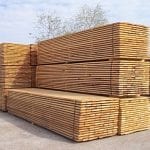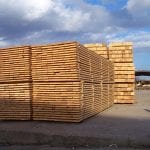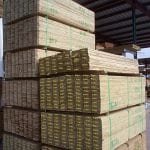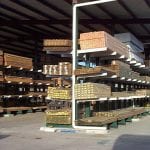Treated lumber is a proven building material. It is impressively strong, cost-effective, renewable in large quantities (we are currently making more southern yellow pine than we use), and visually appealing. Lumber’s foremost drawback is its susceptibility to insects and other natural enemies, but modern treatments have made this concern nearly irrelevant.
Call our experienced project consultants at (800) 716-0636
Treatment Options (Chemicals Used to Treat Lumber)
Although there are numerous treatment options available, most modern construction projects call for one of the following three waterborne pressure treatment chemicals:
- CCA (Chromated Copper Arsenate) used mostly in commercial, industrial, & marine projects
- MCA (Micronized Copper Azole) used mostly for consumer & commercial projects
- CA (Copper Azole) used mostly for consumer & commercial projects
Each of the options is effective for protecting wood against wood boring insects, fungus, and bacteria. CCA is considered by many to be the strongest treatment option but is only available for use in commercial structures.
Call the knowledgeable project consultants at American Pole & Timber at (800) 716-0636 FREE or contact them online to get the best treated lumber for your project.
CCA Pressure Treated Lumber
CCA is considered by many professionals to be the best lumber treatment. It is clean to work with, long-lasting, and relatively non-corrosive to metal hardware and fasteners. In fact, the largest problem with CCA is effectively one of perception because it contains arsenate, a naturally occurring form of arsenic. After extensive research by the EPA, no proven instances of harm from CCA treated wood have ever been recorded but, as a matter of precaution, CCA treated lumber is no longer permitted for residential applications such as privacy fences or decks. CCA treated wood is permitted and safe for industrial, marine projects.
MCA Pressure Treated Lumber
MCA is an effective lumber treatment option approved for consumer applications. It is now commonly used for projects ranging from decks to docks to piers. In addition to being nearly colorless and odorless, MCA is not considered corrosive to fasteners and is a good treatment option overall.
CA Pressure Treated Lumber
CA treated lumber (also known as CA-B) was standardized by the AWPA in 2002 and is an effective treatment for residential, commercial and marine applications. CA treated wood has a slight greenish-brown tint and little or no odor. It is not considered corrosive to hardware and fasteners.
Fire Retardant Lumber & Plywood
When code and/or specifications call for fire retardant lumber, they typically indicate -- or intend to indicate -- pressure-impregnated fire retardant wood (not surface coatings). Fire retardant lumber is available for interior and exterior applications. Learn more about fire retardant lumber here.
The Pressure Treating Process
This ultra-brief explanation of the lumber treating process gives a basic understanding of the process of how your lumber is treated:
- Wood (in large quantities) is put into a large sealed treating cylinder
- Fluid containing the wood preservatives is pumped into the cylinder
- Pressure is applied to the cylinder to force the chemicals into the wood fibers
Can You Partially Pressure Treat Lumber? No. This is a common question but now that you have a little understanding of the pressure treating process, you can see that lumber is either pressure treated or not. It is an all or none process. You can, of course, vary the level of treatment (retention level) applied to the wood depending upon the application for which the wood is destined.
Order What You Need
American Pole & Timber has been supplying pressure treated lumber and timber products for residential, commercial, industrial, and marine projects since 1993. Your treated wood requirements can be made to order. Our friendly professionals are experts in treated wood products and projects and are happy to assist with your treated wood questions.




